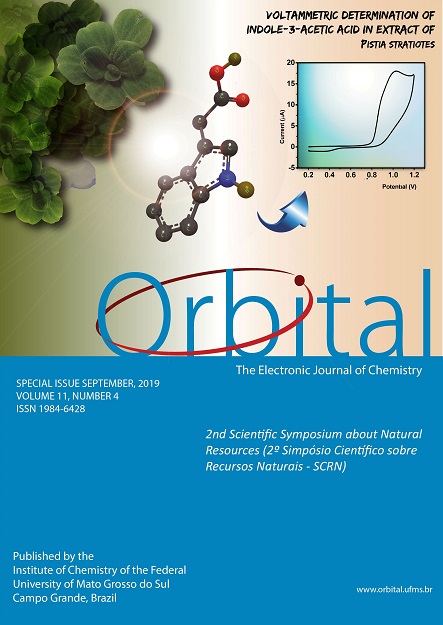Characterization, Oxidative Stability and Antioxidant Potential of Linseed (Linum usitatissimum L.) and Chia (Salvia hispanica L.) Oils
- antioxidant activity,
- fatty acids,
- phenolic compounds,
- vegetable oils
Copyright (c) 2019 Orbital: The Electronic Journal of Chemistry

This work is licensed under a Creative Commons Attribution-NonCommercial-NoDerivatives 4.0 International License.
Abstract
The aim of the present study was to assess the composition and oxidative stability of linseed and chia commercial oils, in addition to determining the kinetics of oxidation at temperatures of 100, 110, 120 and 130°C, as well as the quality parameters, acid value (AV), moisture and ash content. The data of oxidative stability index (OSI), moisture, acid value and ash content were acquired according to the methods: AOCS Cd 12b-92, EN ISO 8534 and AOAC, respectively. The fatty acid composition was assessed by gas chromatography coupled to flame ionization detector (FID). The antioxidant activity was assessed using the method of free radical scavenging of DPPH (2,2-diphenyl-1- picrylhydrazyl) and phenolic compounds using Folin-Ciocalteau reagent. The fatty acids identified in greater amount in the analyzed oils were the unsaturated acids linolenic, linoleic and oleic. Regarding the AV, linseed oil was more acid than chia oil. Chia oil offers better nutritional quality, resulting from the greater amount of unsaturations present in its composition, one of the factors that negatively affected its oxidative stability expressed as OSI. Regarding phenolic compounds and antioxidant potential, chia oil also showed better values, 319.12 mg g-1 and 149.57 µg mL-1, respectively. Linseed oil showed better oxidative stability with activation energy (Ea) and acceleration factor Q10 of 82.12 kJ mol-1 and 1.92, respectively, determined by kinetic studies for oxidative degradation performed using Rancimat method.


